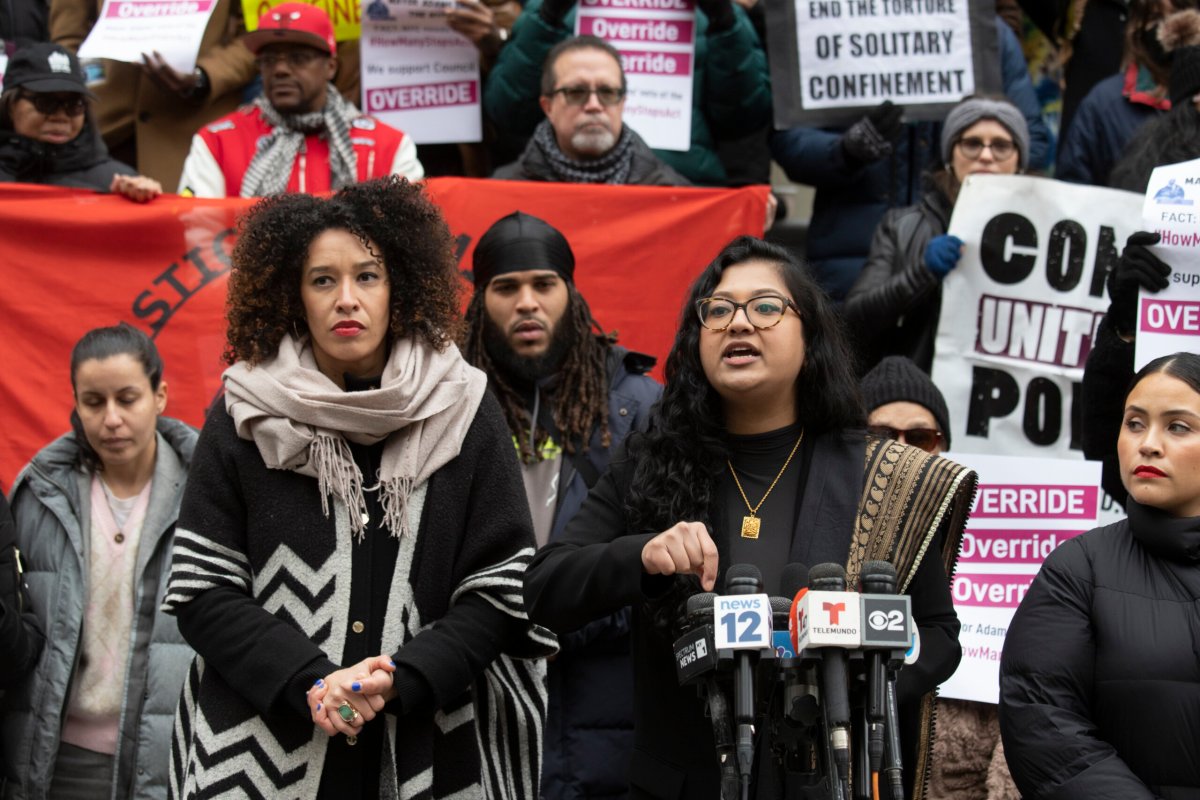On Tuesday, the New York City council voted to override Mayor Eric Adams’ veto of the “How Many Stops” Act, a piece of legislation aimed at improving NYPD transparency and eliminating unlawful police stops.
Thirteen of the 16 council members who represent districts in Brooklyn voted in favor of the “How Many Stops” Act on Tuesday, playing a major role in overriding Adams’ veto of the bill.

The legislation, which requires police to document low level interactions with civilians, passed in the council by 42-9, more than enough to override the mayor’s veto. The only Brooklyn legislators to vote against the bill were Council Members Inna Vernikov (R) of the 48th District, Susan Zhuang (D) of the 43rd District and Kalman Yeger (D) of 44th District.
Opponents of the bill such as Vernikov said that the bill would add to police bureaucracy and take cops away from solving crimes. The bill requires police to document details such as the demographics of the person they encounter, even with low levels interactions.
“By overburdening our men and women in blue with more forms to fill out, we are taking them away from their ability to do the job New Yorkers pay them to do-keeping our communities safe,” Vernikov told Brooklyn Paper. “Filling out information on the demographics of the individuals they encounter doesn’t contribute to public safety, but endangers our communities instead.”
In a joint opinion piece published in amNew York Metro on Jan. 29, Vernikov and Zhuang claimed that the basis of the racial argument necessitating the “How Many Stops” Act would ironically endanger both Jewish and Asian communities, which are both significantly represented in both Vernikov’s and Zhuang’s respective districts.
“In 2021, hate crimes against Asian New Yorkers rose an alarming 361%, from 28 instances up to 129,” the Council Members said. “According to October 2023 data released by the NYPD, 69 out of 101 hate crime incidents which the NYPD recorded were anti-Jewish incidents, up from 22 out of 45 incidents in October of 2022. Common sense dictates that one of the best ways to combat hate crimes is through competent and effective policing, which includes responding swiftly to incidents.”

However, other Brooklyn electeds who supported the bill disagreed, saying that NYPD police transparency and oversight was much-needed and would bolster the civil liberties of all New Yorkers, particularly those of color.
“This bill will provide the public and lawmakers alike with a complete and honest accounting of the way the police interact with our neighbors, helping us target and address the ugly vestiges of stop-and-frisk policing that are once again appearing in the communities we represent,” said Council Member Crystal Hudson. “I am proud to be a part of this Council, to have cast my vote for this historic package, and I look forward to ensuring that these laws are implemented and upheld faithfully.”
The “How Many Stops” legislation was introduced in 2022, with the aim of preventing biased policing. It followed on from a 2013 US Supreme Court ruling that declared NYPD’s stop-and-frisk practices unconstitutional.
According to the New York City Civil Liberties Union, in 2022 the NYPD made 15,102 low level stops. Of these stops, 90% were of people of color, predominantly Black and Latino individuals — despite both groups respectively making up only 23% and 29% of the city’s population.
In Brooklyn, six precincts including the 75th in East New York, the 73rd in Brownsville and the 81st in Bedford-Stuyvesant East all reported disproportionately high numbers of police stops in 2022, with each precinct recording over 1,000 stops per 1,000 residents.
The council initially passed “How Many Stops” on Dec. 19, with 35 council members voting in favor and 9 voting against with three abstentions.
Despite the significant majority, Adams vetoed the legislation, saying the bill forced police officers to fill out additional forms that would waste precious police resources and time.

“I believe, and I want to be very clear on this, the City Council’s intentions were good intentions,” Adams said prior to Tuesday’s vote. “There were parts of this bill that we agreed on. In no way do I want anyone to think this is an anti-Council veto, or an anti-speaker veto. It is a pro-public safety veto that I am doing today.”
Soon after the mayor vetoed the bill, Council Speaker Adrienne Adams announced that the Council would vote again to override the veto, saying in a joint statement Jan. 19 with newly-elected Council Member Yusef Salaam that the mayor’s actions were “deeply disappointing.” The pair said that greater NYPD transparency is needed to ensure lawful stops.
“At a time when one out of every four stops made by the mayor’s new police unit has been found to be unconstitutional, and civilian complaints are at their highest level in more than a decade, the mayor is choosing to fight to conceal information from the public,” the statement read.
“The false narrative that we cannot have transparency is bad for our city, and belies the fact that accountability is vital to improving public safety by increasing trust. The mayor’s veto betrays his stated goal of public safety and harms the Black and Latino communities that bear the brunt of these stops.”























